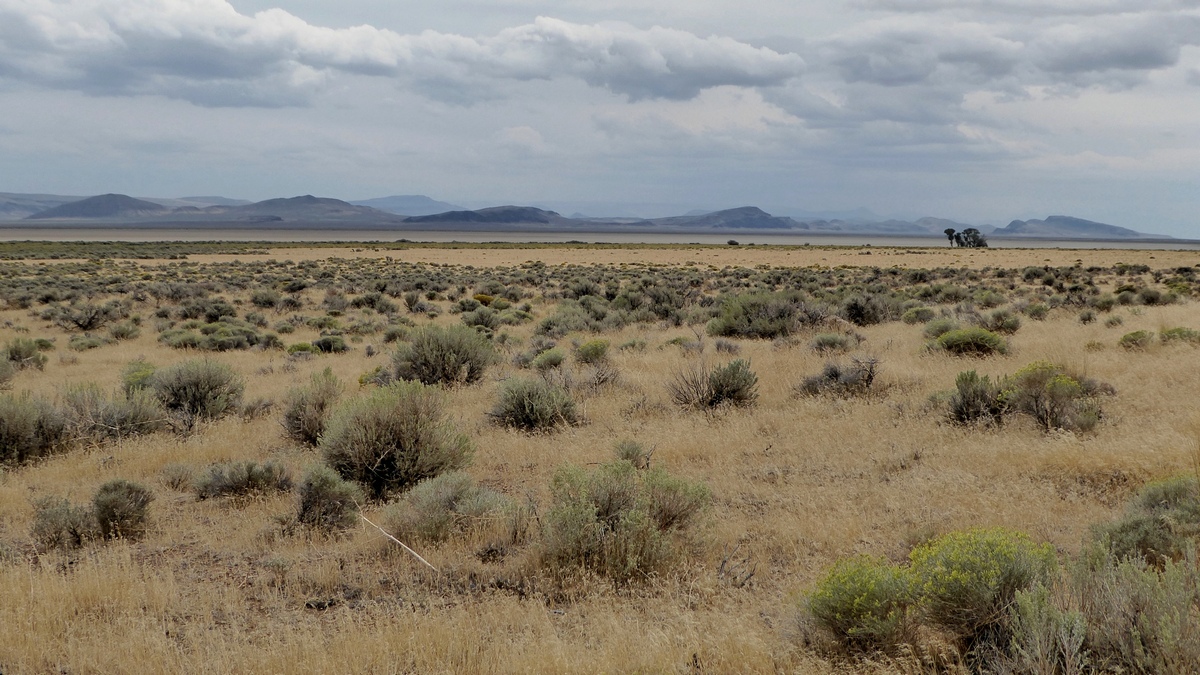Comments from the Chair
Committees begin CAAP implementation
Committee work to implement San Antonio’s Climate Action and Adaptation Plan (CAAP) is beginning, through the Climate Ready Climate Equity Advisory Committee, and Climate Ready Technical & Community Advisory Committee. Hopefully environmental stakeholders will be well represented to ensure strong implementation rules to achieve CAAP goals.
City finds new funding for EAPP
There is now a City of San Antonio (CoSA) staff proposal to fund the Edwards Aquifer Protection Program through the 4% revenue contribution to COSA Budget by SAWS. The Administration of the EAPP would remain as it is now, within CoSA, with monitoring of the program contracted out to Edwards Aquifer Authority (EAA).
The funding level, as presented to City Council (CC) at the 2/19/20 B Session, would be less than currently provided by the 5 year, 1/8 cent sales tax allocation; about $200M for 5 years. The proposal is to guarantee funding for 10 years, at a level totaling about $109M.
Connect SA, VIA Reimagined & TxDoT
The same CC B Session heard staff proposals regarding funding of ConnectSA and VIA Reimagined. Funding proposals include;
- taking over the 1/8 cent sales tax currently dedicated to EAPP and linear creek parkways, when the current funding 5 year period ends (2021), and
- providing the full 1/4 cent Advance Transportation District (ATD) sales tax money to VIA,
- obtaining Bexar County funding for part of the mobility capital improvement costs,
- obtaining matching federal dollars, and
- increasing the “Streets and Sidewalks” portion of the next (2222) five year cycle City Bond issue to 70%, from recent levels of 50%.
These efforts could fund the $1.36B needed for the next five years of improvements in:
- VIA bus frequency,
- micromobility improvements including first/last mile ride connectivity,
- smart street expansions with safe bike and pedestrian mobility, and
- traffic demand management and dedicated transit lanes in hours of congestion to begin an advanced rapid transit bus system.
Texas Department of Transportation (TxDoT) already has over $3.5B in highway expansion and intersection upgrade projects intended to improve congestion. Unfortunately, all the data show this approach never works for more than a few years, with induced demand created by these expansion projects wiping out all intended gains in short order. Sigh...!
City looking to replace funding for creek parkways
Our Linear Creek Parkway System has been funded by the same 1/8 cent sales tax shared with EAPP. Replacement funding is being negotiated with Bexar County (BC), in hopes they will fund $84M to add 45 more miles to the system, while COSA funds maintenance from general revenues, as described (but not finalized with BC at time of presentation) at the same B Session of CC. Sierra Club, Greater Edwards Aquifer Alliance (GEAA) and other environmental stakeholders will be reviewing and debating all of these proposals over the next 1-2 months.
Charter amendment would rein in SAWS abuses
Our local Sierra Club has voted to join the League of Independent Voters (LIV) in a Charter Amendment petition drive conducted by the SAWSActPAC. The goal is to obtain enough signatures to put language on the ballot for a public vote--language designed to rein in the willful abuse of power exercised by SAWS Board of Trustees, the exorbitant compensation paid to General Manager/CEO Puente, the unfair water rates burdening low income residents, and bring accountability to SAWS finances, including the Vista Ridge Project.
We urge all concerned citizens to check out the petition and sign it (petition language and signature page must both be printed to sign). Much background information on SAWS appears on our website in previous newsletters, and under resources. Visit the LIV website for petition specifics and a statement to CC.
Alamo Group continues push for CPS reforms
We continue our effort to reform management at CPS, making them more open and accountable to public input, especially on rates and energy resource planning. They ignored us in extending the Save Energy for Tomorrow Plan (STEP) for a year with no change. They need to drop natural gas from this plan, and actually begin to move away from encouraging homes with gas.
They need to give more support for electric vehicles (EV). They need better building energy efficiency goals. They need to buy natural gas only from sources with documented low maximum levels of methane release during production and transportation. Of course, they must shut down our Spruce coal plants as soon as possible.
Local action on ozone could prevent sanctions
Texas Commission on Environmental Quality (TCEQ) issued a study on our ozone and took comments in February. The study purports to show that “but for” foreign emissions of ozone transported into our area, we would be in attainment with federal Clean Air Act (CAA) ozone current standard of 70 parts per billion (ppb). They attributed 2-3 ppb to foreign emissions, which is exactly the amount we are averaging in excess of standard.
Our Alamo Area Council of Governments (AACOG) has rallied support for the TCEQ findings, because if accepted by the Trump Environmental Protection Agency (EPA), Bexar County could remain in “marginal non-attainment” status. Otherwise BC is likely to fail to achieve compliance this year, and will go to “moderate non-attainment” status in 2021, which would bring costly new regulatory rules.
Of course AACOG and the Chambers of Commerce all spoke in favor of this approach, praising our progress through voluntary efforts. I spoke and rendered a different interpretation of the data, most unwelcome no doubt. In fact the study shows our ozone levels have remained fairly flat for a decade or more. The study also shows that our locally produced ozone is about double on high ozone days, from about 11 ppb to 20.
So clearly, a 3-5 ppb reduction of locally produced ozone on high ozone days could have a major impact on our levels. This local action could put us into compliance, and if such a program were set up now, prior to our upcoming spring and fall high ozone season of 2020, could likely achieve compliance for this year, and avoid the risk of moderate non-attainment designation in 2021.
Of course, I also mentioned that this would benefit our health, the whole purpose of having ozone regulations in the first place. I was the only person to mention health. It is likely that those who breathe money instead of air will again prevail with TCEQ when the final proposed “State Implementation Plan” (SIP) is voted on by TCEQ in July.
Sierra Club or others may then have to take court action. Too bad all the money and effort related to all this couldn’t go toward improving our air.
by Terry Burns, M.D., Alamo Group ChairCanceled: Towards a Texas Nantahala: A Proposal for the Guadalupe River
To prevent potential spread of coronavirus, this event has been canceled.
Recent failures of the Dunlap and Wood Dams, owned by the Guadalupe-Blanco River Authority, have led to significant and often acrimonious controversy over managing drainage and recreational use while protecting property values, along the 130-mile stretch of the Guadalupe River from New Braunfels to Gonzales. At our March General Meeting, Gib Hafernick will present his proposal for redevelopment of that stretch of the river.
Tuesday, March 17th
Doors open at 6:00 pm; announcements at 6:15; program starts at 6:30
William R. Sinkin Eco Centro, 1802 North Main Avenue
Map
Based upon his extensive experience and understanding of Texas waterways and water sports, Mr. Hafernick has developed an imaginative and economic alternative to the expensive and environmentally questionable plan to repair the failing dams. He proposes to modify existing dams and incorporate existing reservoir acreage, to create eight Olympic whitewater venues and forty miles of linear hike and bike trails, plus storm water catchment basins.
Lowering the dams to create navigable rapids aids flood control, naturally aerates and polishes the water, helps return the river to a naturally sustainable ecosystem, and provides high quality recreational opportunities for fishing, canoeing/kayaking, hiking and birding: a Texas Nantahala.
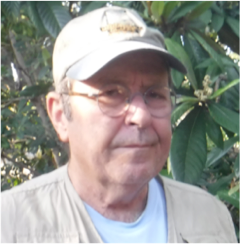
Gib Hafernick, resident of San Antonio since 1964, is a long-time water sports enthusiast and trail runner, with 40-years of very active interest in river conservation and stewardship. Now retired, he earned degrees in Business Administration and Engineering Technology from Texas A&M, and worked in the petroleum industry, also for 40 years, as operations and sales engineer. User-added image Having traveled many Texas river systems, including the Guadalupe and Canyon Lake, plus in Utah and Missouri, Mr. Hafernick is an active fisherman in Texas bays and estuaries, and was heavily involved in the Texas Wild and Scenic Bill in the 1980s.
His numerous accomplishments include founding the Alamo City Rivermen Canoe & Kayak Club; designing a River Run Runnable Canoe/Kayak specifically geared to the conditions of the Southern Reach of the San Antonio River; volunteering at the Headwaters of Incarnate Word for the past three years; organizing canoe races and rides at Woodlawn Lake’s Earth Day for at least 10 years; coordinating/directing water races and whitewater venues including at the Mitchell Lake Bird Lover event and SA Olympic Festival. On top of all that, Gib loves Dutch oven cooking.
Our April general meeting will be Tuesday, April 21st, when Cleveland Powell will speak on creating a pocket prairie in your own yard, for natural beauty and to impact a host of environmental issues.
This meeting is free and open to the public. Please post, or forward, to anyone who may be interested in this program.
Oregon: A Few "Corner" Spots
The first two pictures were taken en-route to Olympic National Park in July, 2019. The first one is on the Pacific Crest Trail (PCT) near mile 1740, in southwestern Oregon. A woman of fairly slight stature a few miles south, traveling alone, said she started at the Mexican border (mile zero) March 31. So she was averaging 15+ miles/day. There are many PCT sections far more challenging and much less frequented than this one.
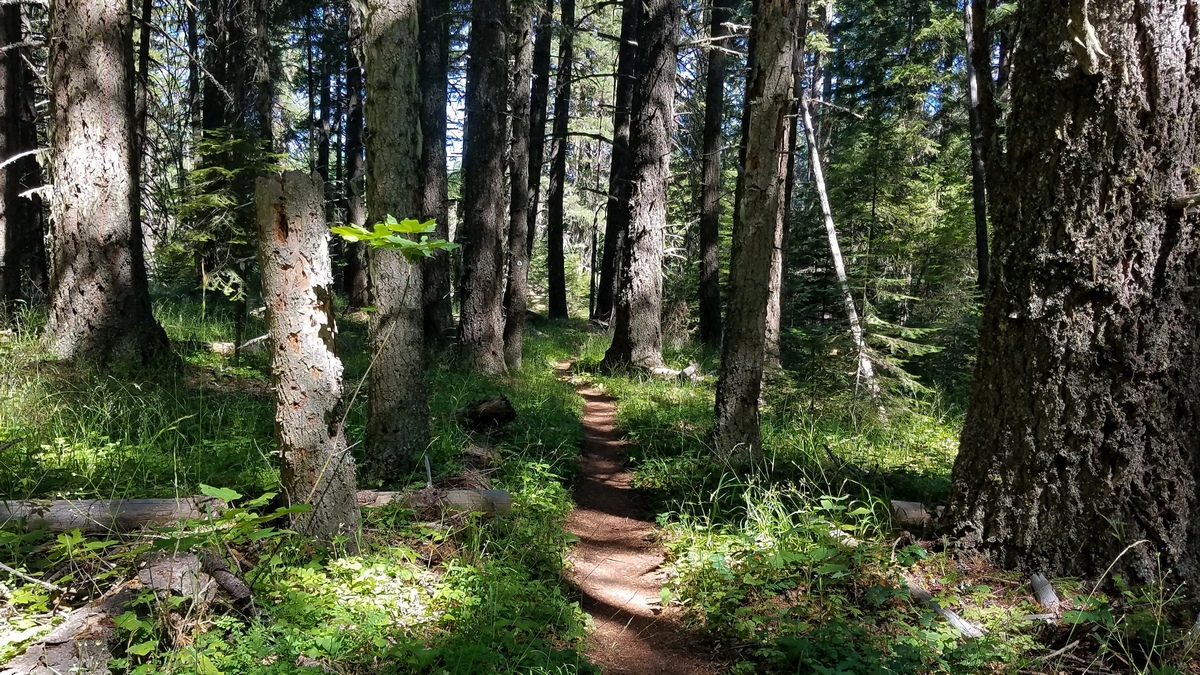
In Cascade-Sikiyou National Monument, on the PCT, Green Springs Mountain loop trail. This national monument is managed by BLM. There is a PCT marker barely visible on the small tree just left of the trail. This 2.2 mile loop trail is just south of Hyatt Lake campground, 30 miles west of Klamath Falls.
The second picture is a view of Hells Canyon, in Hells Canyon National Recreation Area, Wallowa-Whitman National Forest. Nearly ¼ million acres are included in the Hells Canyon Wilderness. Three National Wild and Scenic Rivers run through the Wilderness: the Snake, Imnaha, and Rapid rivers. The Snake, which is the largest tributary of the Columbia, runs through Hells Canyon itself.
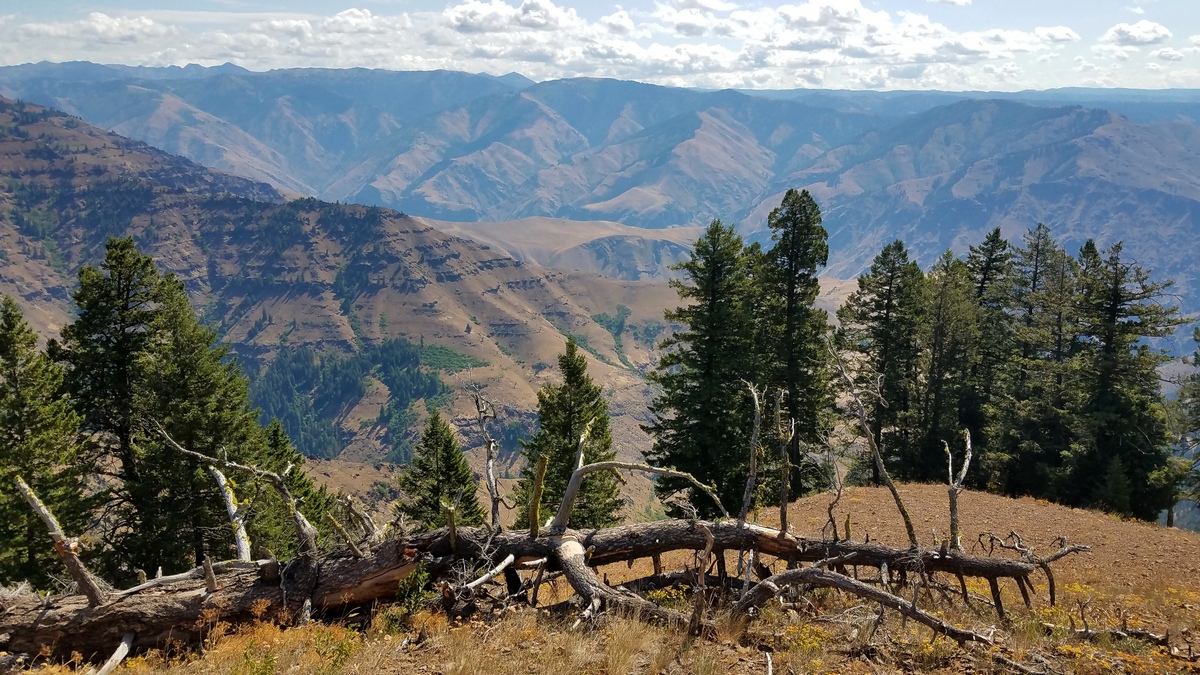
At Hells Canyon overlook, in northeastern Oregon, looking east. The Snake River flows in the gorge below. Looking at this scene we wonder if there is a day hike route to a river viewpoint. Here’s a good web page about hikes in the area with photos and maps; there is a route not far north. So I should go back.
Hells Canyon is the deepest canyon in North America due to the 8000’ elevation difference between the Snake River and peaks in the Seven Devils Mountains a short distance east. Here’s a comparison with the Grand Canyon, depthwise. The Grand Canyon is arguably more scenic due to being much younger and therefore less eroded; for comparison, there was a picture of the Colorado River gorge in the May 2018 issue of this newsletter. Copper Canyon in Mexico is also deeper than the Grand Canyon.
The third picture is in southeastern Oregon, taken not far southeast of Malheur National Wildlife Refuge which I had visited the previous day in September 2017. Malheur was occupied by far-right extremists for five weeks in 2016. There was a sunrise picture from this trip taken a bit further northeast in the April 2018 issue of this newsletter.
In southeastern Oregon looking southeast. The north edge of the Alvord Desert, a big alkali flat, stretches across the middle of the picture (map). This is just east of Steens Mountain. This area is about on northern edge of the Great Basin Desert.
by Kevin Hartley, Alamo Group Outings leaderVulcan Quarry Opponents Sue TCEQ, Appeal Air Permit Decision
Stop 3009 Vulcan Quarry and Friends of Dry Comal Creek filed a lawsuit against the Texas Commission on Environmental Quality (TCEQ) in Travis County District Court on February 17th. The lawsuit is the latest step in the legal appeals process, and requests judicial review of TCEQ’s November decision to grant an air pollution permit to Vulcan Construction Materials, LLC.
In June 2017, Vulcan submitted an application to construct and operate a rock crushing facility and quarry on a 1500‐acre former cattle ranch in Comal County, between New Braunfels and Bulverde. Vulcan’s open‐pit limestone mining operation would stretch across nearly three miles of the environmentally sensitive Edwards Aquifer Recharge Zone.
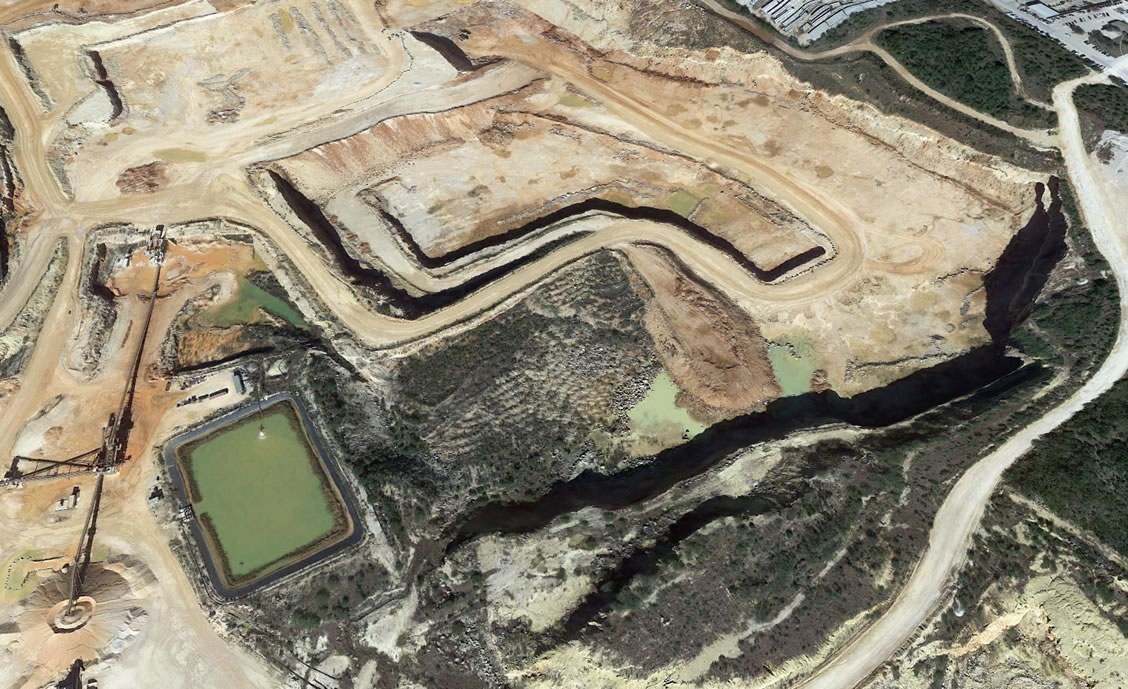
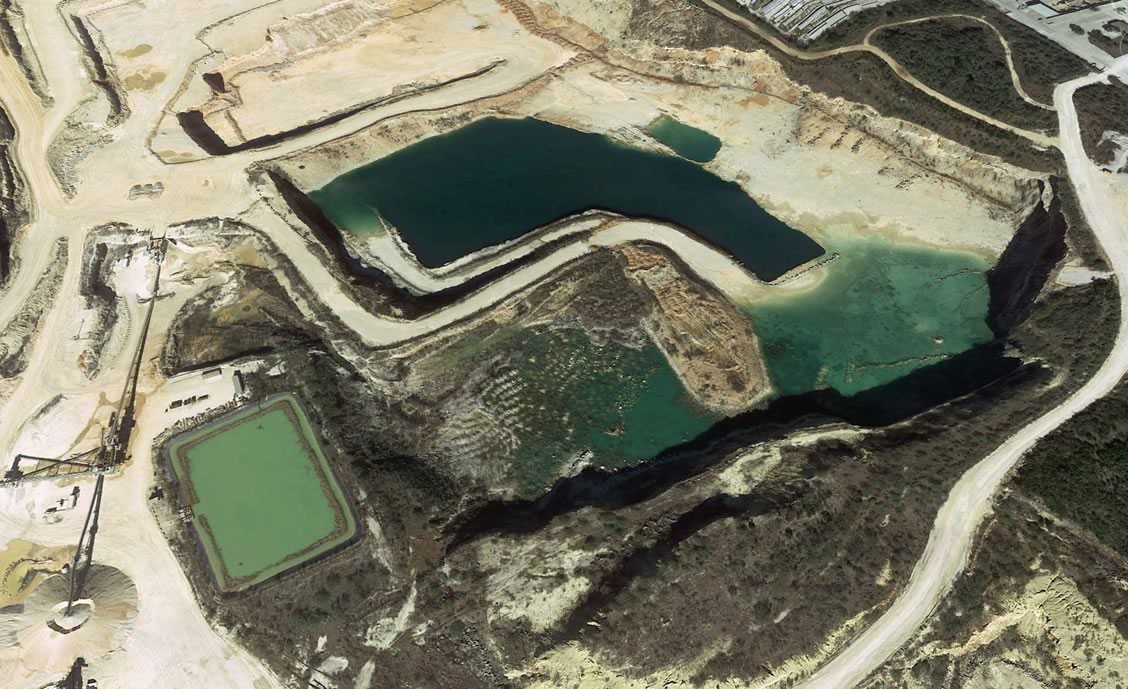
2015 (top) and 2017 (bottom) satellite images of Vulcan quarry north of Loop 1604 in San Antonio
(Google, Landsat/Copernicus)
The lawsuit is part of a prolonged battle between Vulcan and hundreds of area Hill Country neighbors and citizens groups. In the petition, plaintiffs ask the court to reverse TCEQ’s permit approval decision and send the application back for “lawful evaluation,” citing the following failures and prejudices during the June 2019 contested case hearing:
- Legal errors during discovery and trial
- Capricious and arbitrary exclusion of relevant data from air pollution modeling
- Failure to account for diesel exhaust emissions
- Allowing TCEQ staff guidance to supersede statutory state law
- Failing to require case‐by‐case determination of emission reductions
During the contested case hearing, the administrative law judge allowed Vulcan to use a “trade secret” excuse to hide from both TCEQ and area residents key core sample data used to calculate air pollution. At the hearing, Vulcan revealed that they had since destroyed most of the core samples they obtained from the property. Additionally, the administrative judge did not allow opponents to cross‐examine Vulcan about this disputed core sample data.
A separate lawsuit opposing the same permit was filed against TCEQ on Friday by Comal ISD and other area residents. Neighbors are concerned about air pollution, truck traffic, destruction of caves, and decreased property values that could result from the location of this heavy industrial facility in a residential area populated by over 12,000 people.
But this isn’t just another “not in my backyard” issue. David Drewa, Director of Communications for Stop 3009 Vulcan Quarry states, “This proposed facility should be very concerning to residents of San Antonio and New Braunfels—and all two million people who depend on the Edwards Aquifer as their primary source of drinking water.”
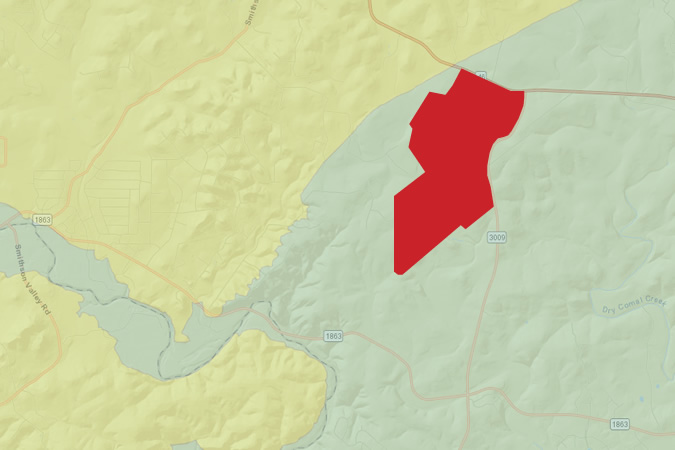
Map showing proposed quarry site located entirely over Edwards Aquifer Recharge Zone (darker blue-green color)
Jack Olivier, a Comal County geologist and member of the Texas Speleological Association, expressed concern about the location over the recharge zone: “Quarries here can act as manmade funnels into the underlying aquifers. The limestone sediment produced inside the quarry pit can get washed into the ground. The explosives used for blasting, a combination of diesel fuel and ammonium nitrate, can also be introduced inside the pits. And during flood events, pollutants can get washed in, carrying chemicals like pesticides and herbicides, and septic tank effluent.”
Drewa says that the citizens groups will continue to advocate for common sense oversight and protections for the health and safety of neighboring residents and ranchers who have lived in the areas for years—and in some cases, decades. “This is not a done deal. We will continue to use every administrative and legal challenge available to defend our rights as citizens, oppose this quarry, and preserve our health, air, and water.”
Stay informed by visiting Stop 3009 Vulcan Quarry webpage for news updates.
by David Drewa, Director of Communications for Stop 3009 Vulcan Quarry
Outings: The Call of the Wild
Visit the Alamo Sierra Club Outings page on Meetup for detailed information about all of our upcoming Sierra Club Outings.
The Alamo Sierran Newsletter
Richard Alles, Editor
Published by The Alamo Group of the Sierra Club, P.O. Box 6443, San Antonio, TX 78209, AlamoSierraClub.org.
The Alamo Group is one of 13 regional groups within the Lone Star Chapter of the Sierra Club.
Changed your mailing address?
Have you moved? Let us know by sending your old address, your new address and your member ID (see: Locating Your Member ID) to: address.changes@sierraclub.org.
Go online for the latest news and events
 |
